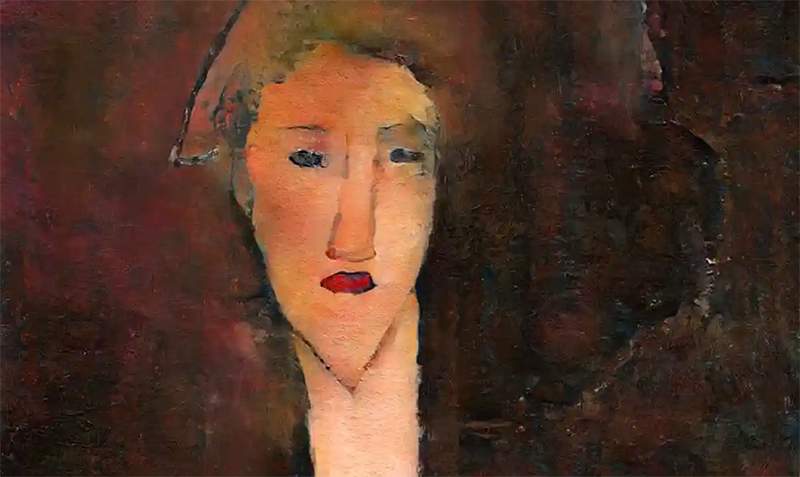The Italian artist may have wanted to brush Beatrice Hastings out of his life, but artificial intelligence has thwarted him by enabling a re-creation of the work
No one wants to be reminded of a failed relationship by having the ex’s portrait hanging around. After Amedeo Modigliani and his lover, Beatrice Hastings, broke up, the Italian artist is thought to have obliterated her memory by painting another woman’s likeness over his portrait of her.
So he might not be too happy to learn that science has now brought back that “lost” portrait, using artificial intelligence, an X-ray and 3D-printing to re-create the painting, with full colour and textured brushstrokes.
Portrait of a Girl, a 1917 masterpiece, is owned by the Tate, which was taken aback in 2018 to discover an earlier portrait beneath the picture. X-rays revealed the ghostly outlines of a full-length figure, prompting the then curator, Nancy Ireson, to suggest that it was a portrait of Hastings, and that Modigliani “might have painted her out” after their intense two-year relationship ended in 1916.
Now a neuroscientist and a physicist at University College London have used that X-ray and analysis of Modigliani’s paintings to train algorithms to look beneath the picture’s surface and reveal its “secret” portrait.
Anthony Bourached and George Cann, both PhD candidates, are heading the “NeoMasters” project through a company called Oxia Palus. They have ambitious plans to rediscover further hidden paintings on canvases that were reused by artists, who were perhaps too impoverished to buy supplies or dissatisfied with initial compositions.
Bourached is a specialist in high-dimensional neuroscience, trying to model human behaviour through AI. Of the art project, he said: “We’re trying to show what is possible.”
Cann, whose main focus is analysing trace gases in the Martian atmosphere, argues that this project could deepen our understanding of art: “There are potentially thousands of artworks out there that are hidden beneath layers of paint. In the next few years, we’ll be able to bring a light into this darkened gallery.”
Modigliani is revered for elongated portraits and sensual nudes that attract record prices. Though his 1917-18 masterpiece, Reclining Nude, sold in 2015 for $153m, he was destitute at his death in Paris from tubercular meningitis, aged just 35.
Hastings, a London-born South African writer and journalist who was five years older than him, became terminally ill and, in 1943, took her own life. She had been his first serious love. They shared a passion for reading and poetry. But their relationship was stormy, with rows and physical fights fuelled by absinthe, wine and hashish. Hastings once described him as a “ravishing villain”.
Kenneth Wayne, a leading Modigliani expert, said the Italian master created some 14 paintings of her in oil and dozens of drawings, reflecting her significance: “They were involved from 1914 to 1916, the exact years when his signature style developed, with elongated faces and necks and the influence of African art. Visually, she may have influenced him.
“They were tied intellectually. She was very smart. He was starting to find himself. Their discussions probably clarified his thinking.”
Although Wayne acknowledged that Modigliani’s portraits of Hastings are very different – sometimes with a rounded face and sometimes elongated, and with differing hair colour – he remains to be convinced that she was depicted in this hidden portrait: “I do not immediately recognise her, and I am not sure yet what we can conclude from the X-ray.”
Of the process to re-create the painting, Bourached said: “Using standard mathematical techniques, the edges and contours of Modigliani’s paintings can be seen as if drawn in chalk on a blackboard. State-of-the-art techniques in AI can learn how to reproduce the colour and paint-like texture in the original paintings.”
He and Cann have collaborated with Dr David G Stork, a visiting lecturer at Stanford University in California, who specialises in using computers and AI for studying art. He said: “It is an important opportunity, combining technical image analysis with an art historian’s expertise, to see new things in art.”
Asked how Modigliani might have felt, Bourached said: “We’ve thought about that, but the value of art is documenting information. Historians don’t only look at the things people wanted us to know about.”

